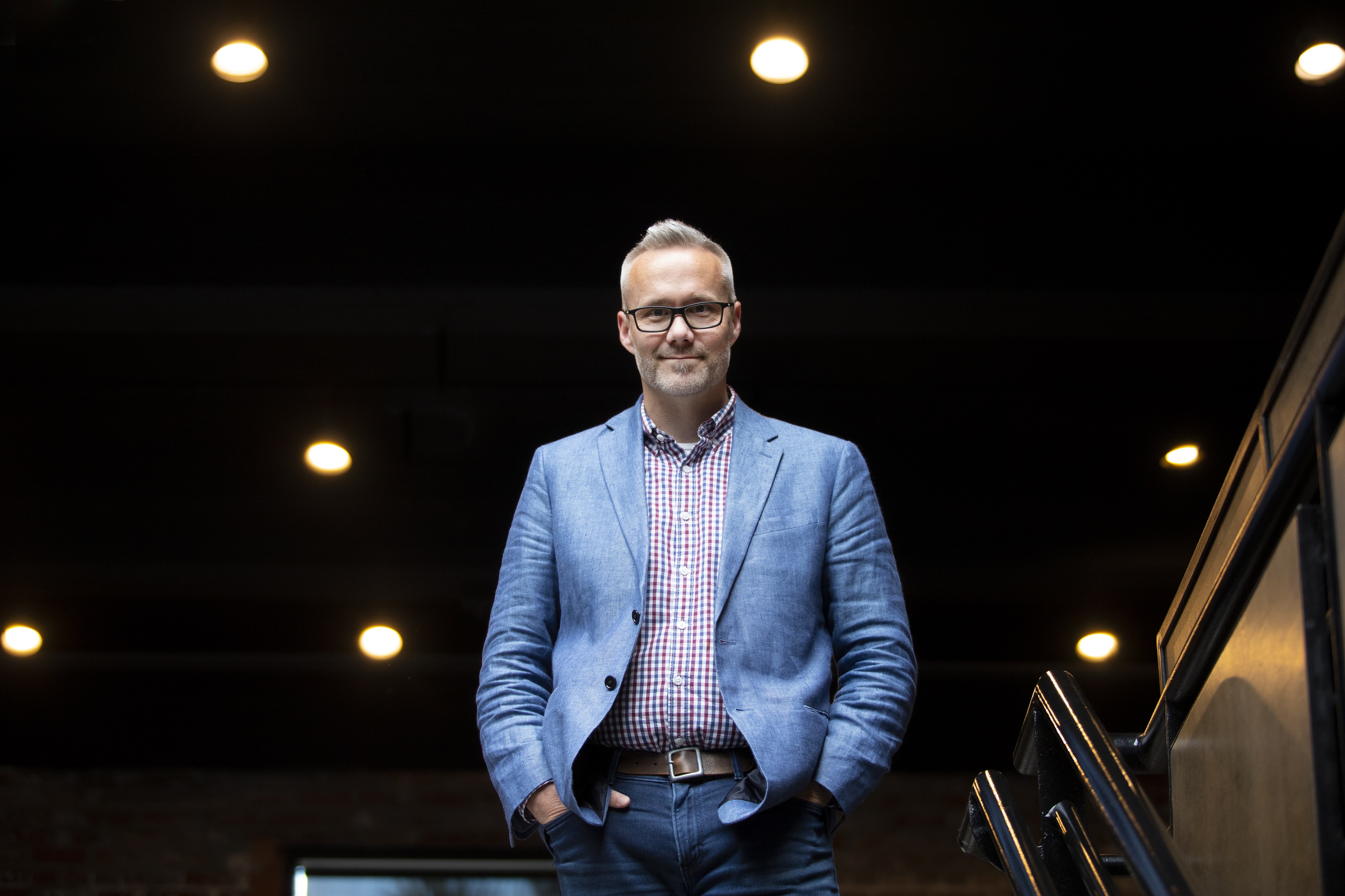
Royal Caribbean’s head innovator Joey Hasty: Turning dreams into memories
If you want a glimpse of the future, spend a minute with Joey Hasty – because he’s got it in the palm of his hand.
“Come here, take a look,” he says, pulling a phone out of his pocket. “I love this.”
With a few brisk finger taps, the affable associate vice president of innovation and transformation at Royal Caribbean, 45, calls up on his phone the image of the brightly lit, wood-paneled office where he’s holding court, and marks a spot on the screen.
“This is Richard Fain, our CEO; I’m going to just place Richard right in front of us,” he explains. Within a heartbeat, a new person fills the visual reproduction of the room – this one, holding a 3D model of a massive ship.
Looking at Hasty’s phone screen, we can walk toward Fain as he speaks – at one point it seems natural to stop short, for fear we might bump into him. Step backwards, and the voice gets softer as he remains in the same spot; pinch-zoom-in on the ship and you can look in its windows. Like a proud papa, Hasty recounts the impetus behind this particular piece of tech, the Edge Access tour app.
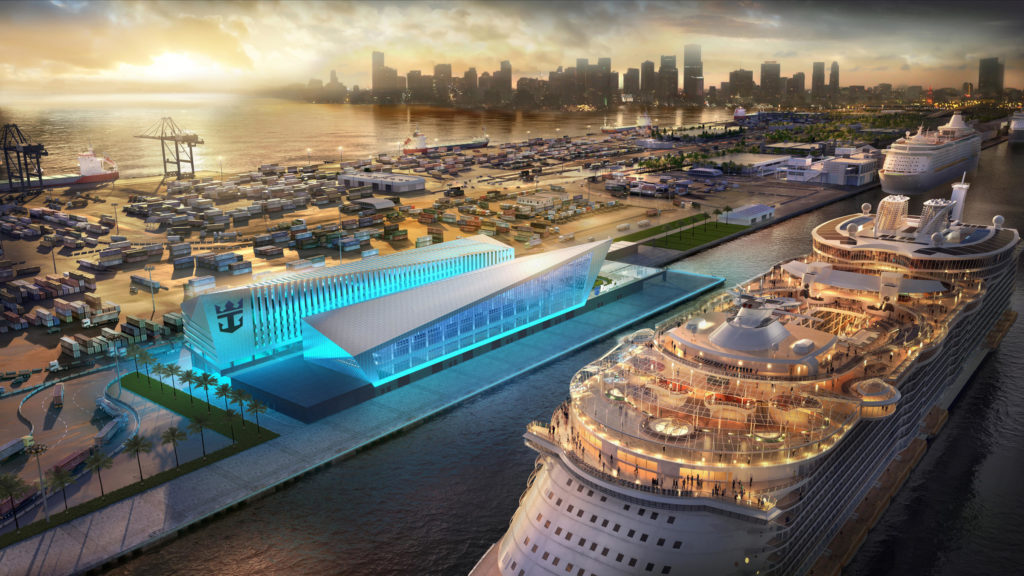
Royal Caribbean’s dramatic new Terminal A at PortMiami is home to the newest ship in the Royal Caribbean International fleet, Symphony of the Seas.
“We’ve found that when everybody boards, they want to do the same thing – just run around and explore the whole ship. That’s great, but how can we enhance that? How can we make that better for our guests?” With a smile, he adds: “The first time I ever got a ship tour as an executive, the cruise captain came out and walked me around. Immediately, I thought: ‘How can everyone get this experience?’”
Hasty’s job is to dream of such things. Proudly referring to his career as “a Cinderella story,” it developed after he fell in love with interactive design as an undergrad in the late ‘90s (“Back then, nobody really knew what it meant”), then spent more than a decade at the forefront of Disney’s groundbreaking efforts bridging the gap between digital and physical realms.
Three years ago, Hasty’s longtime supervisor Jay Schneider became Chief Digital Officer at Royal Caribbean. “He then invited me to start an ‘Imagineering Department’ at Royal Caribbean,” Hasty recalls. “I won the job lottery, because we can go from idea to concept to something we can show someone in just a couple of weeks.”

Jay Schneider, chief digital officer at Royal Caribbean.
Schneider, for his part, fully recognizes the challenges of Hasty’s “job lottery” assignment. “If you think about a cruise line – we’re a hotel company, a food and beverage company, an entertainment company and a shipbuilding company, with 24/7 operations and complicated supply chain logistics. The belief within our company is that the use of technology, data and AI will be a key differentiator in all these things in the future.”
Hasty lives at the pivot point where dreams and treasured moments intersect, working today to shape the future memories of countless Royal Caribbean guests.
“We have the largest ship at sea; it is literally a floating city,” he says of Symphony of the Seas, just one of RC’s fleet encompassing around 25 ships, some of which hold as many as 10,000 people. “When our guests truly love something, it’s magic.”
At first blush, you could be forgiven for not thinking of a 200,000-ton boat as being on the cutting edge. But Royal Caribbean recently celebrated a 50-year history overflowing with industry innovation, from rock-climbing walls to ice-skating rinks to robotic bartenders. Hasty’s job is to continue that tradition as an industry leader – while simultaneously staking claim as a 21st century global enterprise.
“Starbucks has taught everybody our drink will be ready when we get there; Uber has taught everyone you don’t have to be outside to hail a cab; Waze has taught us to expect the shortest routes, and Yelp has us expecting to always find a great restaurant,” Hasty says of any company’s modern-day battle not just against competitors, but the world itself. “The experience landscape is now being set by others. Just to compete, just to meet guest expectations, every company needs to be a technology company.”
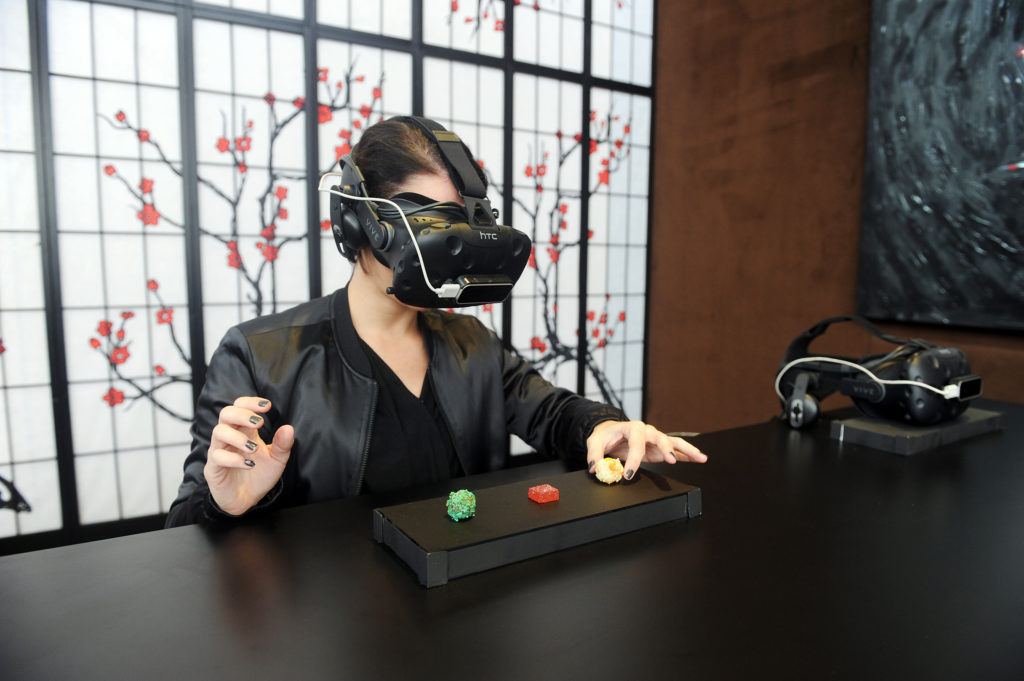
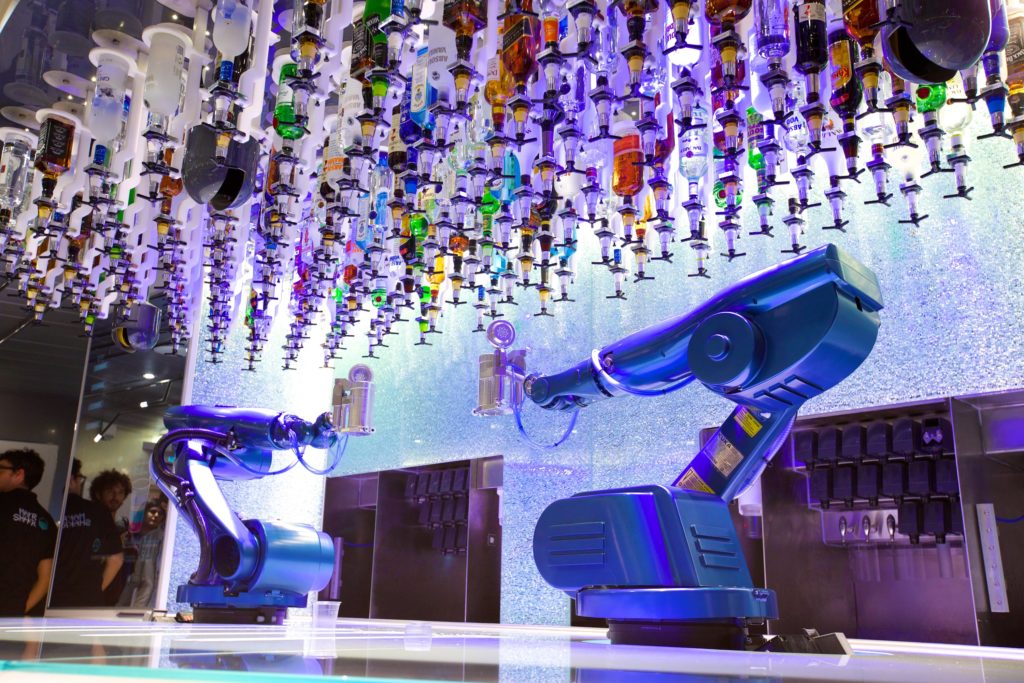
“It’s with that mindset in place that Hasty sets out to bridge the gap between dreams and reality.
“Not long ago, check-in was about a 30-minute process to get you on board a cruise line,” Hasty explains, touting a recent breakthrough. “It really felt like going through the TSA, not starting a vacation.”
To streamline things, Hasty and his team envisioned an “invisible experience,” fueled by customer-submitted cellphone selfies and pre-checks. But as they workshopped the idea, they discovered that removing all friction just resulted in confusion and guilt.
“It’s that feeling you get at a store with no registers; you’re supposed to just walk out, but you feel a little shady about it,” he explains. “That’s even more amplified when you board a cruise ship. You’re like, ‘Am I just supposed to walk on?’ As it turns out, guests need the feedback; something saying all is well.”
In search of a solution, Hasty turned to some old friends. “When I took it to Microsoft, some of the first conversations were: ‘We’ve never tried to do it this way. Let’s think with our hands to see what’s possible,’” he recalls. “It was never ‘We can’t get there,’ it was always “Well, this is what would be required to get there, so this is what we’ve got to go do.’”
In the years since Hasty has begun working with the Commercial Software Engineering (CSE) team, the relationship has empowered him to imagine with no limitations – confident in the knowledge that CSE will bridge the gap between his team and Microsoft’s product engineers, accelerating their capabilities through tech and innovation.
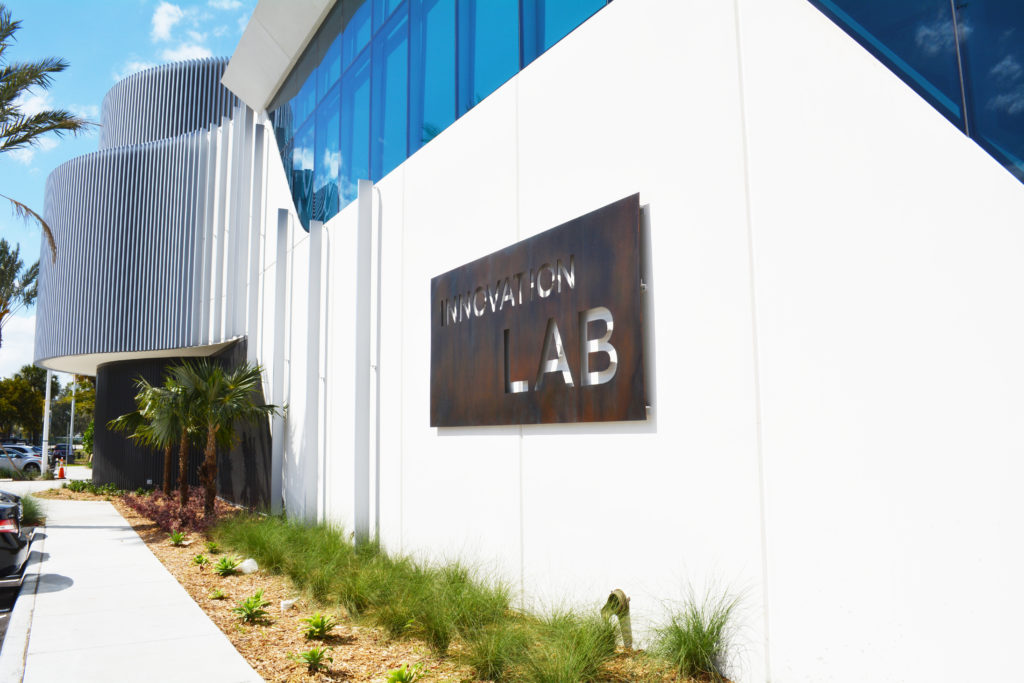
Royal Caribbean’s new Innovation Lab in Miami takes the ship design process to new heights by bringing the best creative minds and the latest technology together under one roof.
“They provided resources to help us validate things Royal didn’t have access to, like cognitive services and cloud computing capability that allowed us to recognize faces in a millisecond,” Hasty explains, pointing out RC’s privacy policies that ensure customer transparency and that captured images are only used for the cruise experience.
“The first prototype was a camera and a laptop with Cognitive Services. Can we see these people, connect them to our data; can we check them in just using their face? From there, we realized that we want to talk about the guest experience, the height of the camera, the quality of the camera that we need, the flow of people, how fast can the camera pick up people, how many people can be in the frame at once.”
Utilizing an open source mindset, the CSE team worked alongside Royal Caribbean every step of the way to develop a solution that was both “invisible” and interactive enough to remove that sense of guilt.
“We noticed that when all these people went by, they didn’t quite know where to look, so we put a light ring on it. Then we realized people needed feedback, so we put a screen on it,” Hasty says of the project, which averages split seconds per passenger and is significantly faster than the manual review process.
“The LED ring gives you simple color codes – white says ‘We’re looking for your face,’ blue says, ‘We found your face,’ and green says, ‘You’re all clear.’ It happens almost instantaneously, everyone understands it instantly, and we’ve created a beautiful appliance that you can walk through with your whole family together at once.”
“Now boarding is literally, go up the escalator, walk by the facial recognition machine and onto the ship – welcome aboard,” Hasty adds with a smile. “We like to say car to bar in minutes.”
Echoes Schneider: “Joey and I are huge fans of the CSE group. Our focus right now is on how we leverage emerging technology to transform the guest experience, and Microsoft keeps us on the next edge of technology as it relates to disruption in our industry.”
To date, the relationship has manifested itself in a variety of ways. The aforementioned Edge Access tour app, for instance, is powered by Microsoft’s Capture Studio technology. Elements of Azure, AI and dashboards manage guest experiences daily, and RC attended last summer’s One Week hackathon on the Microsoft campus in Redmond, Washington, engaging with the CSE team on video analytics initiatives.
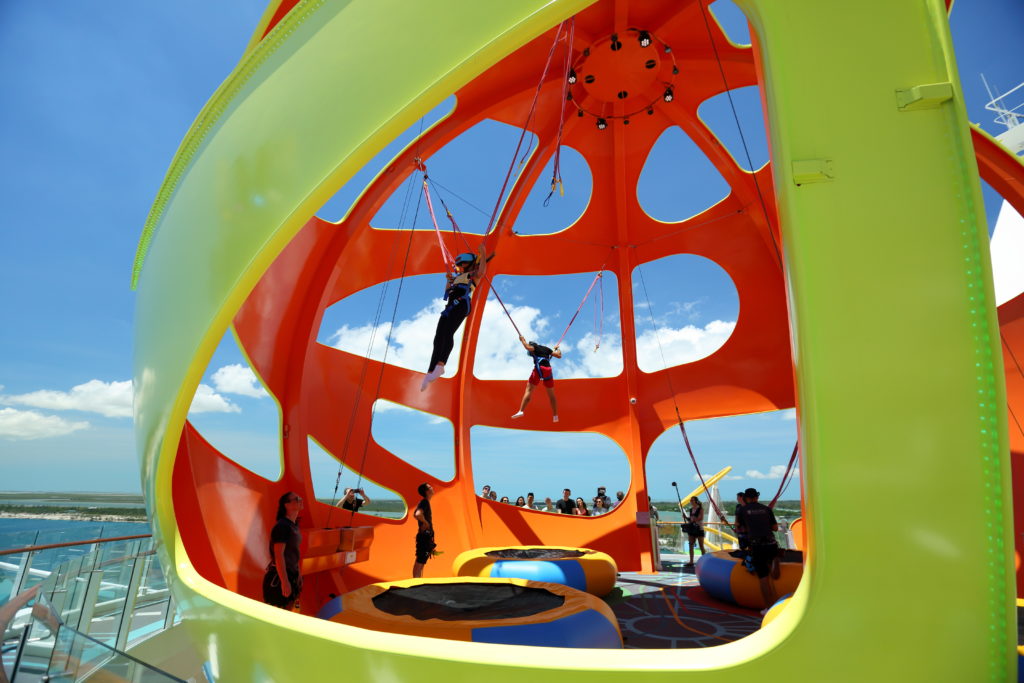
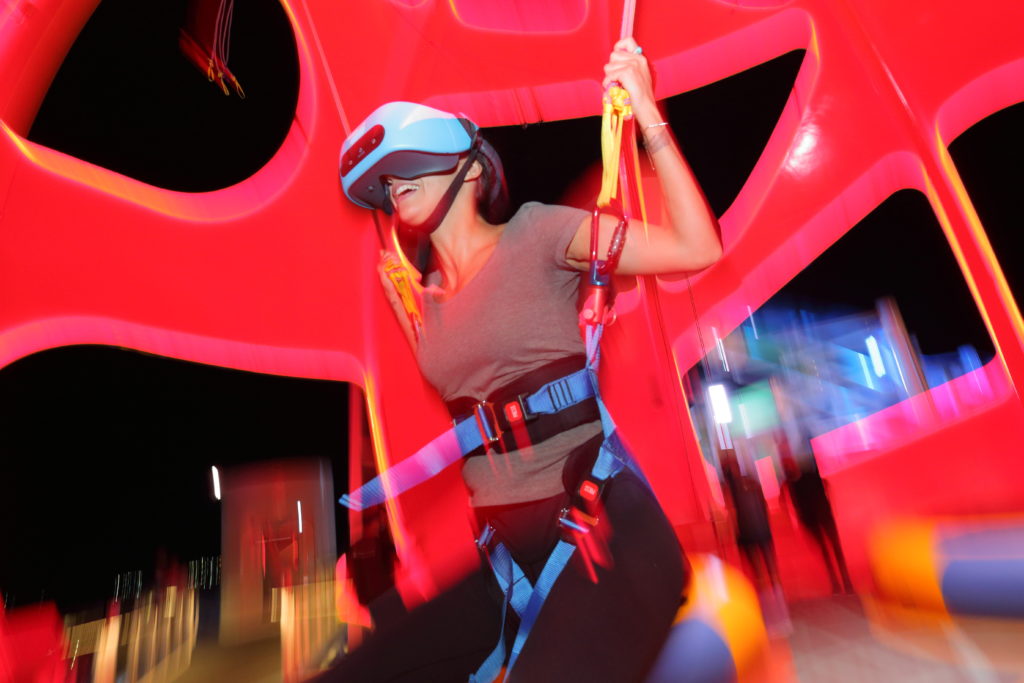
Such efforts are a manifestation of what Satya Nadella has dubbed “tech intensity”: A fusion of cultural mindset and business processes that rewards the development and propagation of digital capabilities that create end-to-end digital feedback loops.
“He’s spot on; every time we peek at data, we are amazed at the power it gives us to provide a great customer experience,” Hasty says, citing a recent, groundbreaking example. “Not long ago, we said: ‘Microsoft, we think there’s an opportunity to measure things using our closed-circuit TV cameras.”
Suddenly, the closed-circuit cameras installed in every public area across Royal Caribbean’s fleet became an endless well of analytics.
“That question took us down a series of hacks with Microsoft, understanding how we can exploit our existing technology,” Schneider recalls. “Our largest ships are bigger than aircraft carriers; acquiring venue analytics, retail analytics, flow, movement and more is a daunting task. So, we challenged Microsoft: How can we use our existing infrastructure to get to that scale quickly? How can we look at our own CCTV cameras – no matter how antiquated they are, and with various models – and leverage computer vision for our needs?”
Using AI to anonymously track bodies rather than faces, these cameras observe how long a person stays in a certain area, traffic paths and population density — all huge, nearly invisible factors in streamlining the guest experience. Which retail displays get the best engagement? When should the “roving piano” relocate itself? How long after a guest is seated at a restaurant do they receive their meal – and is it still hot?
“We’re training cameras to watch food, so we don’t make so much that will go to waste,” Hasty says of sustainability innovations achieved through AI. “We’re using it to fuel conversations about how we order things, move things, the lifecycle of a product, how we recycle. Now we have the tech to get smarter about such business decisions.”
When you consider that this particular business just happens to spend the majority of its time out at sea, one other mind-boggling aspect comes to mind: As you relax on a lounge chair with your umbrella drink, you’re sailing on what is in many ways a giant, camouflaged computer.
“Every company is moving to the cloud, including our own. But it’s difficult to deliver real time information from the cloud when we’re in the middle of the Caribbean; we’re on a satellite bandwidth,” Hasty explains. “So, lots of our computing happens in data centers and processing centers literally on board, and Microsoft helps us architect amazing innovations that sync to the cloud when possible.”
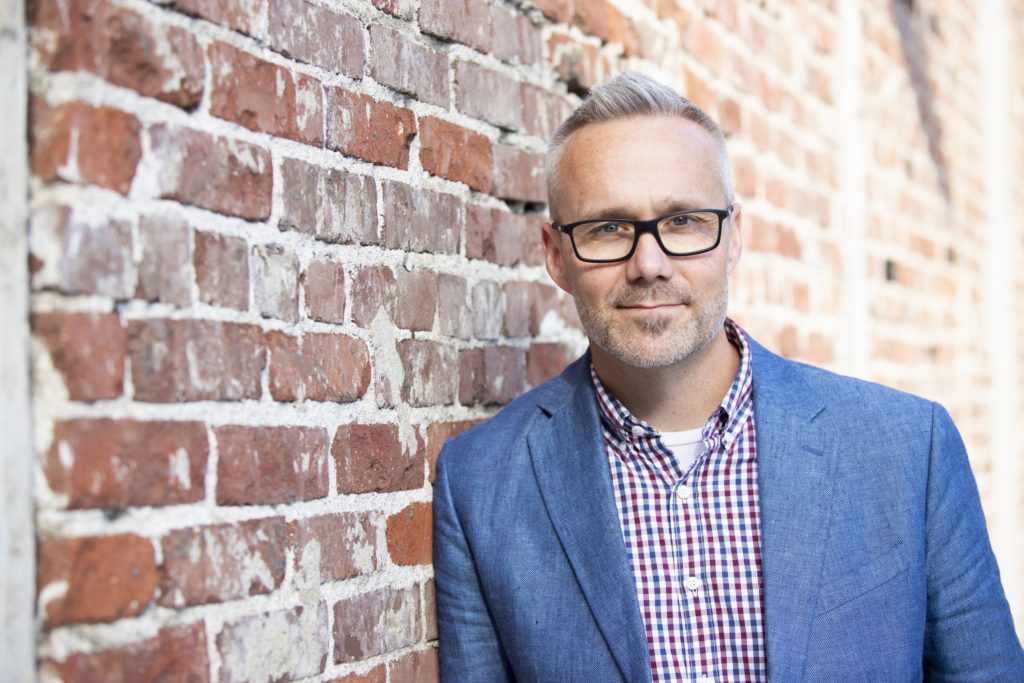
Joey Hasty’s imagination helps shape the future memories of countless Royal Caribbean guests.
Wide-eyed and full of palpable passion for such efforts, Hasty’s attention turns once again to where it usually is: The future.
“We just launched Sky Pad, a bungee experience on the top deck of one of our ships,” he says of a game that lets you “jump” from planet to planet via virtual reality headset. He refers to another idea as “Bring Me a Drink,” where a customer can be anywhere on an RC ship, push a cellphone button and receive a beverage from the nearest bar.
He’s also working on “VR Dining,” which taps into the science of nerve centers in the brain to create visuals that enhance the taste of your food. Much of this is designed in Royal Caribbean’s Port of Miami innovation lab, which Hasty lovingly describes as “Willy Wonka’s factory meets Tony Stark’s lab.”
Hasty is confident that he’ll be able to keep such ideas coming – and he fully appreciates his unique place at the intersection of innovation and transformation.
“I love taking an obstacle and turning it into something that strengthens families and makes a person’s day more fun,” he grins. “In fact, we don’t think of ourselves as being in the cruise business – we think of ourselves as being in the business of making memories.”
Top photo: “Just to compete, just to meet guest expectations, every company needs to be a technology company,” says Joey Hasty, associate vice president of innovation and transformation at Royal Caribbean. (All photos courtesy of Royal Caribbean)

